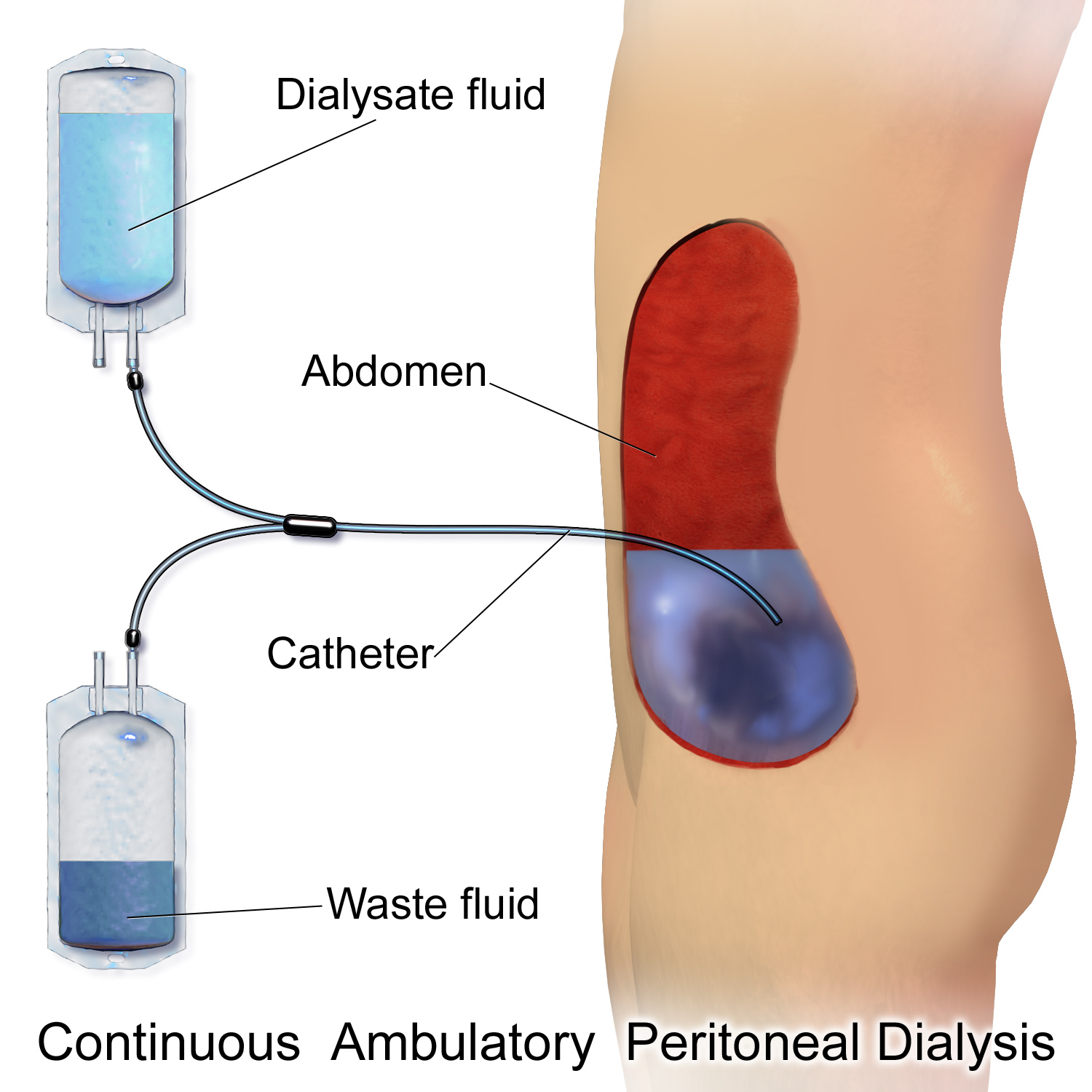
Continuous Ambulatory Peritoneal Dialysis (CAPD) is a type of peritoneal dialysis used to treat patients with chronic kidney failure. Unlike other forms of dialysis, it is performed manually by the patient or caregiver, typically throughout the day, without the need for a machine.
How CAPD Works
Insertion: A catheter is surgically inserted into the peritoneal cavity through a small incision in the abdomen. This catheter allows for the introduction and removal of dialysis fluid.
Location: The catheter is typically placed in the lower abdomen.
Dialysate: A sterile fluid (dialysate) is infused into the peritoneal cavity through the catheter. This fluid contains electrolytes and glucose, which help remove waste products and excess fluids from the blood.
Dwell Time: The dialysate remains in the peritoneal cavity for a set period, typically 4 to 6 hours, allowing waste products and excess fluids to diffuse into it.
Draining: After the dwell time, the used dialysate, which contains waste products and excess fluids, is drained from the peritoneal cavity through the catheter.
Replacement: Fresh dialysate is then infused into the peritoneal cavity to initiate a new cycle.
Manual Exchanges: The process involves performing multiple exchanges of dialysate throughout the day, usually 3 to 4 times.
Daily Routine: Each exchange typically takes about 30 to 45 minutes, including the time needed to infuse and drain the fluid.
Advantages of CAPD
It can be done at home, allowing patients to maintain a more flexible lifestyle compared to hemodialysis.
Unlike Automated Peritoneal Dialysis (APD), CAPD does not require a machine, making it simpler and less equipment-dependent.
Provides continuous dialysis, which can be easier on the body and more closely mimics natural kidney function compared to intermittent hemodialysis.
Some patients may have fewer dietary restrictions due to the continuous nature of the dialysis.
